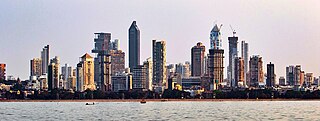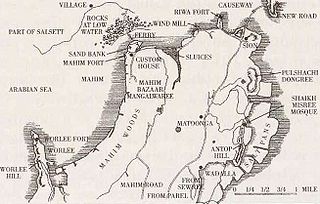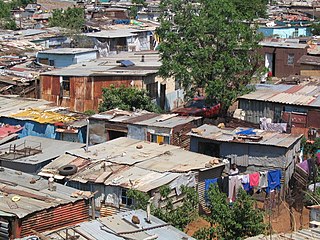Contents
This article needs additional citations for verification .(November 2016) |

This article needs additional citations for verification .(November 2016) |



International:

Mumbai is the capital city of the Indian state of Maharashtra. Mumbai is the de facto financial centre and the most populous city of India with an estimated city proper population of 12.5 million (1.25 crore). Mumbai is the centre of the Mumbai Metropolitan Region, the sixth most populous metropolitan area in the world with a population of over 23 million living under the Brihanmumbai Municipal Corporation. Mumbai lies on the Konkan coast on the west coast of India and has a deep natural harbour. In 2008, Mumbai was named an alpha world city.

A slum is a highly populated urban residential area consisting of densely packed housing units of weak build quality and often associated with poverty. The infrastructure in slums is often deteriorated or incomplete, and they are primarily inhabited by impoverished people. Although slums are usually located in urban areas, in some countries they can be located in suburban areas where housing quality is low and living conditions are poor. While slums differ in size and other characteristics, most lack reliable sanitation services, supply of clean water, reliable electricity, law enforcement, and other basic services. Slum residences vary from shanty houses to professionally built dwellings which, because of poor-quality construction or lack of basic maintenance, have deteriorated.
Kamathipura is a neighbourhood in Mumbai, India known for prostitution. It was first settled after 1795 with the construction of causeways that connected the erstwhile seven islands of Mumbai. Initially known as Lal Bazaar, it got its name from the Kamathis (workers) of other areas of the country, who were labourers on construction sites. Due to tough police crackdowns, in the late 1990s with the rise of AIDS and government's redevelopment policy that helped sex workers to move out of the profession and subsequently out of Kamathipura, the number of sex workers in the area has dwindled. In 1992, Brihanmumbai Municipal Corporation (BMC) recorded there were 45,000 sex workers here which was reduced to 1,600 in 2009 and 500 in 2018. Many sex workers have migrated to other areas in Maharashtra with real estate developers taking over the high-priced real estate. In 2018 the Maharashtra government sought tenders to demolish and redevelop the area.

Dharavi is a suburb in Mumbai, Maharashtra, India. It has often been considered to be one of the world's largest slums. Dharavi has an area of just over 2.39 square kilometres and a population of about 1,000,000. With a population density of over 277,136/km2 (717,780/sq mi), Dharavi is one of the most densely populated areas in the world.

A shanty town, squatter area or squatter settlement is a settlement of improvised buildings known as shanties or shacks, typically made of materials such as mud and wood. A typical shanty town is squatted and in the beginning lacks adequate infrastructure, including proper sanitation, safe water supply, electricity and street drainage. Over time, shanty towns can develop their infrastructure and even change into middle class neighbourhoods. They can be small informal settlements or they can house millions of people.

The Mithi River is a river on Salsette Island, the island of the city of Mumbai, India. It is a confluence of tail-water discharges of the Powai and Vihar lakes. The river is seasonal and rises during the monsoons. The overflowing lakes also contribute to the river flow, which is stopped by a dam at other times. During this season, the gutter is a favourite with anglers, who can catch large fish that have escaped from the lakes. Chattrapati Shivaji Maharaj International Airport is located right next to the section of river at Andheri (E).

The Riwa Fort, locally known as Kala Qilla or Black Fort, is a fort in central Mumbai (Bombay), India on the banks of the Mithi River. The fort is currently in a dilapidated condition amidst the Dharavi slums. It was built by the Mughal governor of Bombay, Yakut Khan. It was part of the larger Bombay Castle, and marked the northern portion of Mughal-held Bombay in the 17th century. The castle was also used as a watchtower, guarding the territory against the Portuguese-held Salsette Island. The Riwa Fort was later captured by the Marathas.

Orangi is a municipality approximately 57 square kilometres (22 sq mi) in an area that forms much of the northwestern part of Karachi in Sindh, Pakistan. Orangi is the world's third largest slum, with a population of 520,195, according to the 2017 Pakistan Census, half that of Mexico's Ciudad Neza, Mexico City and that of India's Dharavi, Mumbai.

Dahisar River is a river on Salsette island that runs through Dahisar, a suburb of Mumbai, India. It originates in the Tulsi Lake in Sanjay Gandhi National Park in the northern reaches of the city. The River flows roughly North-West for a total of 12 kilometres through the localities of the National Park, Sri Krishna Nagar, Daulatnagar, Leprosy Colony, Kandar Pada, Sanjay Nagar, and Dahisar Gaothan before meeting the Arabian sea via the Manori Creek. Its total Catchment area is 3488 hectares.
Jockin Arputham was an Indian community leader and activist, known for his campaigning work of more than 40 years on issues related to slums and shanty towns. He was born in Karnataka, India and moved to Mumbai, where he quickly became politicized and established himself as a community leader. In 2014, he was nominated for the Nobel Peace Prize, alongside the organisation he helped to found, Slum Dwellers International.
Mahila Milan is a self-organised, decentralised collective of female pavement dwellers in Bombay. The group works with issues such as housing, sanitation, and grassroots lending schemes. It aims at gaining women equal recognition for improvement of their communities, while indulging in important decision making activities. The loans granted by the group to its members in times of need, are sanctioned in the name of the woman of the house.
Mahul is a fishing village in Chembur, Mumbai, located on the eastern seafront of the Mumbai Suburban district. Since 2017, Mahul has been in the news for its high levels of pollution and the dismal conditions of its 72-building slum resettlement colony. The area has come to be referred to as Mumbai's "toxic hellhole", "gas chamber", and "human dumping ground", where the poor "are sent to die".

Sathuvachari Varadarajan Mudaliar, also known as Vardhabhai and Vardha, was an Indian crime boss. From the early 1960s to the 1980s, he was, along with Karim Lala and Haji Mastan, one of the most powerful mob bosses in Bombay. His origin is Sathuvachari in North Arcot district of Tamil Nadu, from where his father migrated to Tuticorin to work in shipping business. He was born in Tuticorin, Tamil Nadu.
Housing in India varies from palaces of erstwhile maharajas to modern apartment buildings in big cities to tiny huts in far-flung villages. The Human Rights Measurement Initiative finds that India is doing 60.9% of what should be possible at its level of income for the right to housing.

Slum tourism, poverty tourism, ghetto tourism or trauma tourism is a type of city tourism that involves visiting impoverished areas. Originally focused on the slums and ghettos of London and Manhattan in the 19th century, slum tourism is now prominent in South Africa, India, Brazil, Kenya, Philippines and the United States.
Dharavi is a slum in Mumbai, India.
Bilkees Idrees Latīf was an Indian social worker and writer from Telangana, known for her work in the slums of India. She was a founding member of INTACH.

Kaala (transl. Black) is a 2018 Indian Tamil-language action drama film written and directed by Pa. Ranjith, and produced by Dhanush under his production house Wunderbar Films. The film stars Rajinikanth in the titular role alongside Nana Patekar, Samuthirakani, Eswari Rao, and Huma Qureshi who appear supporting roles.

Sundaram Natarajan is an Indian ophthalmologist. In 2002, he started a free clinic in Dharavi, a slum in Mumbai, and treated more than 8,000 people. He has also held free camps in various other suburbs of Mumbai such as Mankhurd and Govandi to treat the economically poor. In 2016, he also held a camp in Kashmir to operate and cure the victims of pellet gun firings.

Informal housing or informal settlement can include any form of housing, shelter, or settlement which is illegal, falls outside of government control or regulation, or is not afforded protection by the state. As such, the informal housing industry is part of the informal sector.